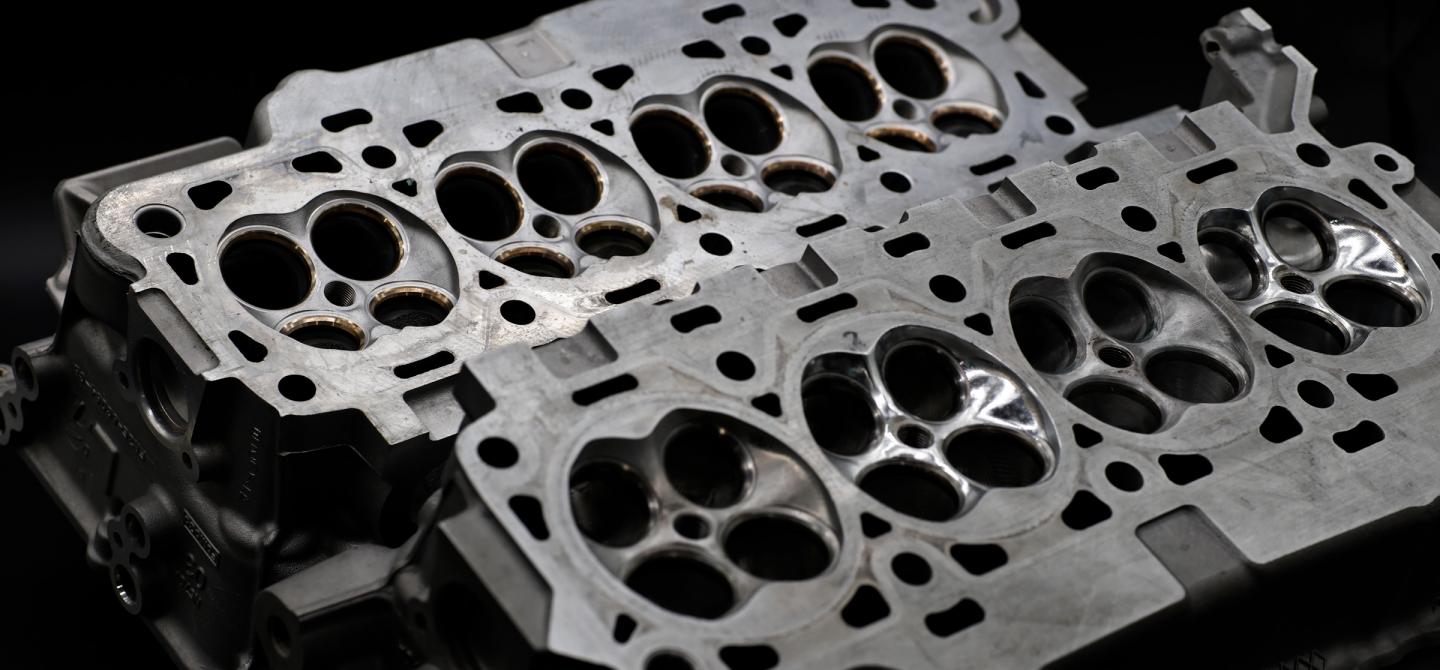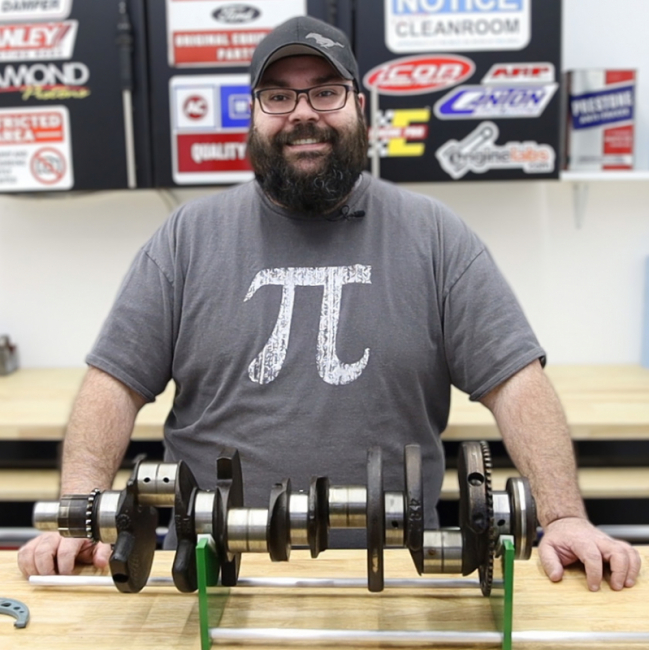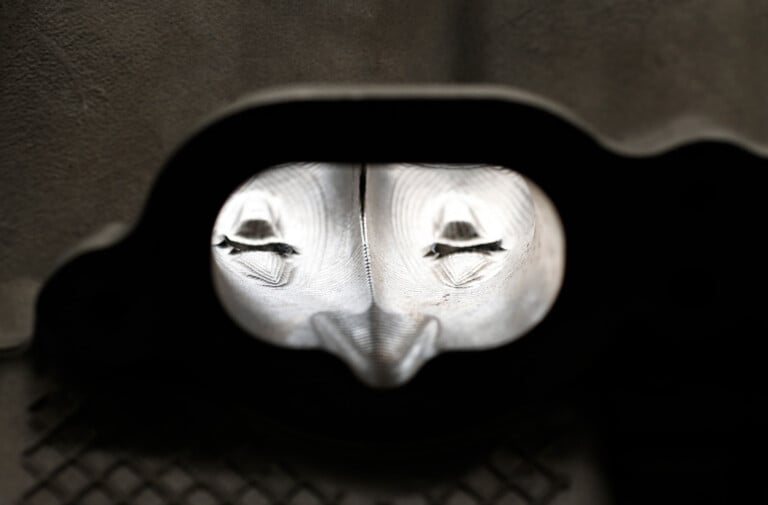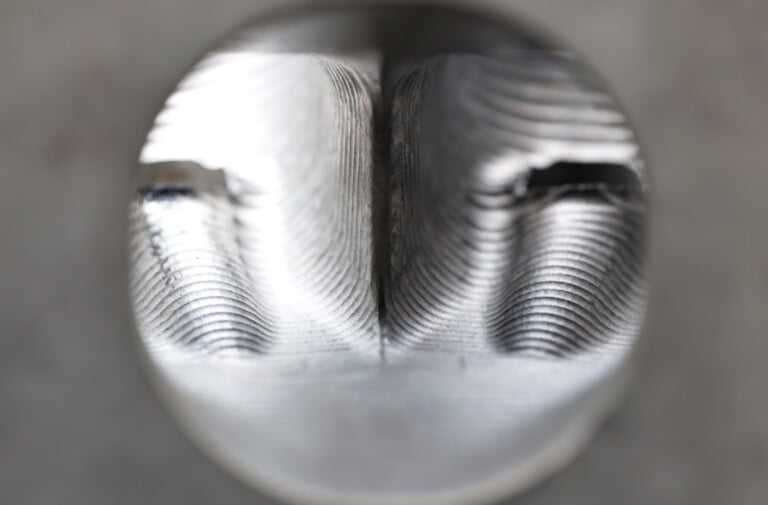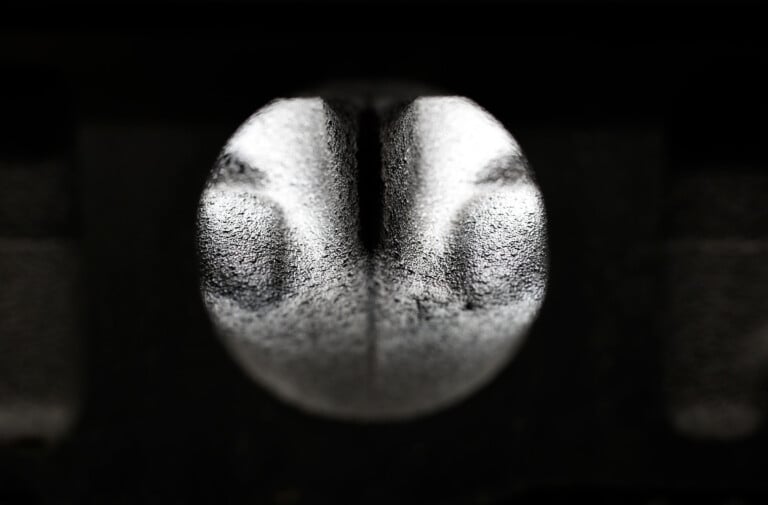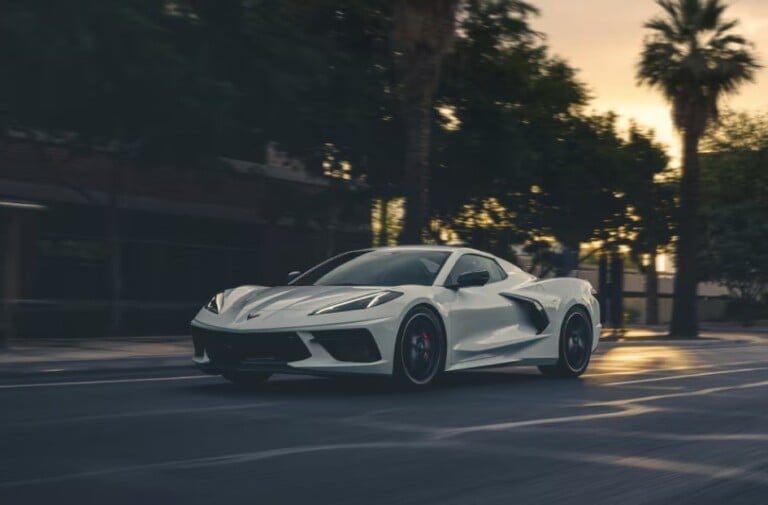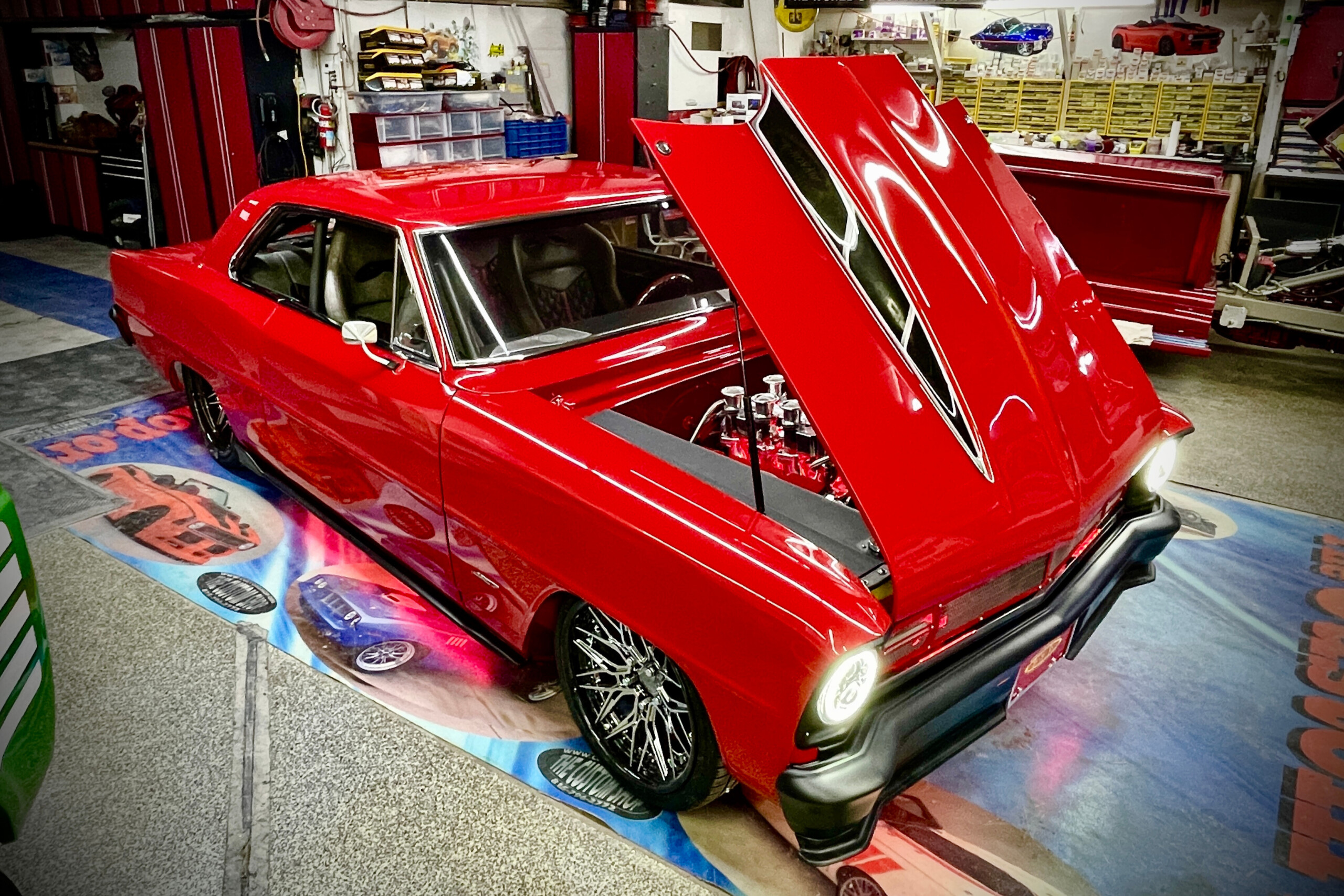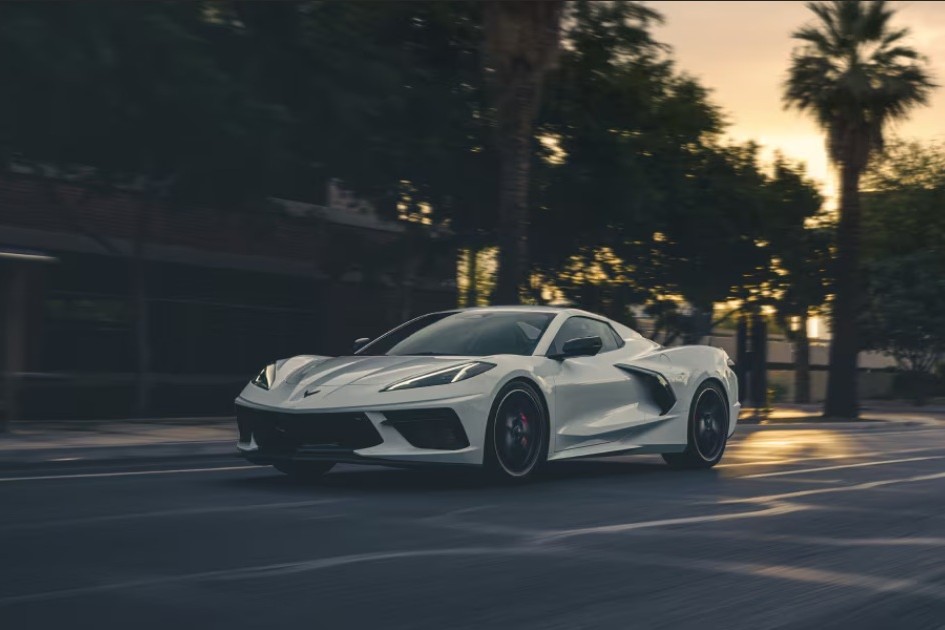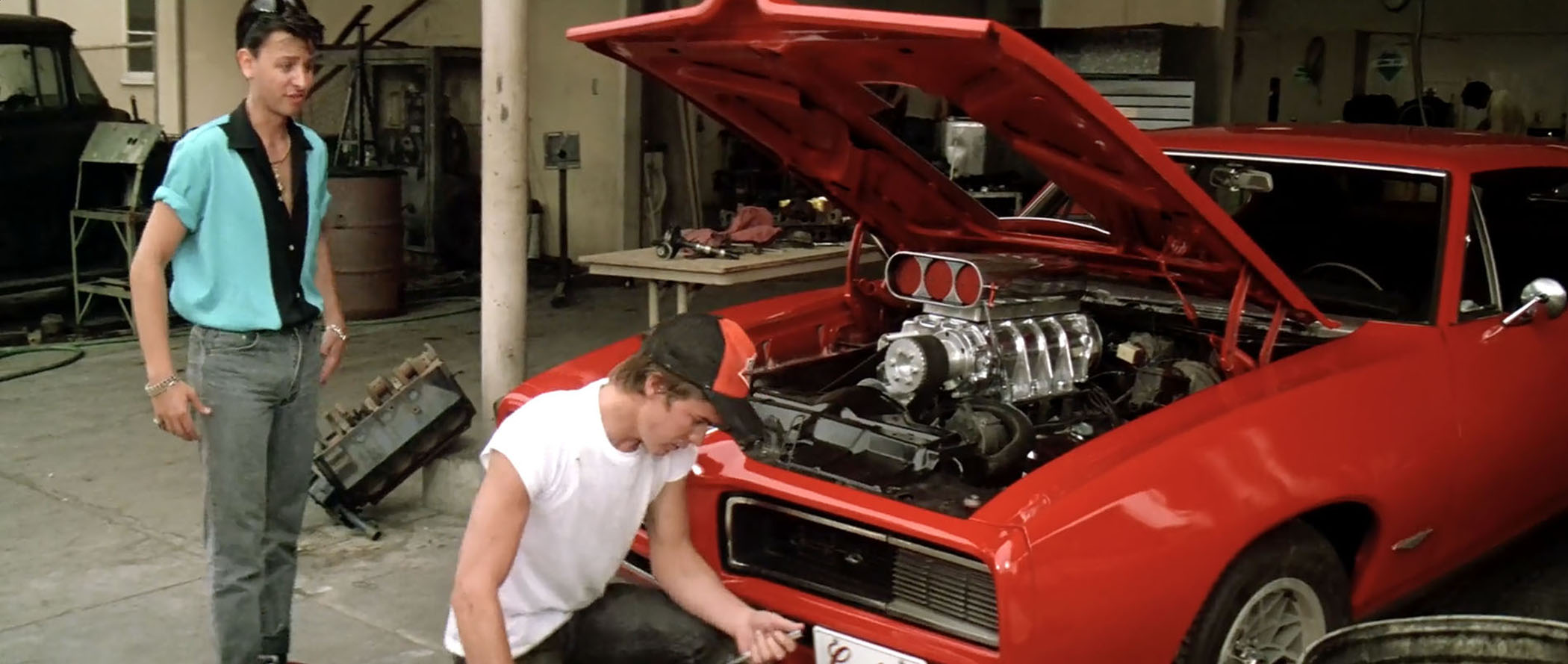For a lot of years, the rumor mill has said that the Gen-2 Coyote heads are a cast version of the Boss 302 head that was released in the second year of Coyote Mustang production, on the aptly named Boss 302 model. However, even though this was just a rumor, and no official documentation was ever found to confirm the rumor, it became an internet “fact” that people love to spread.
However, thankfully we have people like HeadGames Motorworks David Localio, who value the truth above all else. So, after not being able to find any reliable sources to confirm that the two heads share a port design, he did what any curious cylinder head guy with a flowbench would do. He tested them. Well, he more than tested them, he actually dove into the heads to find out how similar — or dissimilar — the two actually are.

This is what makes the Boss 302 heads so amazing and so sought-after — factory CNC porting. The Boss 302 heads were CNC-machined on the intake and exhaust ports, as well as the combustion chamber. They also received a solid multi-angle valve job not often seen on factory heads.
Coyote Boss 302 Cylinder Heads
Looking at the Boss 302 intake port, you can immediately see the heads are something special, with CNC machining marks plainly visible. “They are definitely not the most beautiful CNC ports ever,” says Localio. “But they are definitely powerhouses. The Boss 302 picked up quite a bit of horsepower for an N/A combination.”
Right off the bat, Localio points out that the combustion chamber design of the Boss 302 heads is different than all other Coyote heads, in that there is no place for direct injection. Not that there isn’t a port for DI, but that there is no PLACE for a DI injector.
Here are the Boss 302 (left) and the Gen-2 (right) intake ports, side-by-side. There are multiple differences between the two besides just the machined versus cast finish. The shape and size are fairly different. The flow of the two ports, however, aren't as different as you might think.
He moves on to the throat of the CNC ports and begins to praise the Blue Oval engineers. “Ford really knows how to blend in a CNC valve job. This thing is pretty gnarly. They even added an additional angle to the valve seat on both the intake and exhaust side,” dissects Localio.
Moving to the exhaust ports, Localio jokingly states, “The ports look like they were chewed on by a dog, but that’s how you know they are true OEM.” However, aesthetics aside, there is a lot of CNC machine work that went into the OEM exhaust ports. Localio points out the subtle funnel-shaped merge between the two valves and the fin that has been machined into Boss 302 exhaust ports. A quick measurement of the port opening shows that the Boss 302’s exhaust port actually measures noticeably narrower.
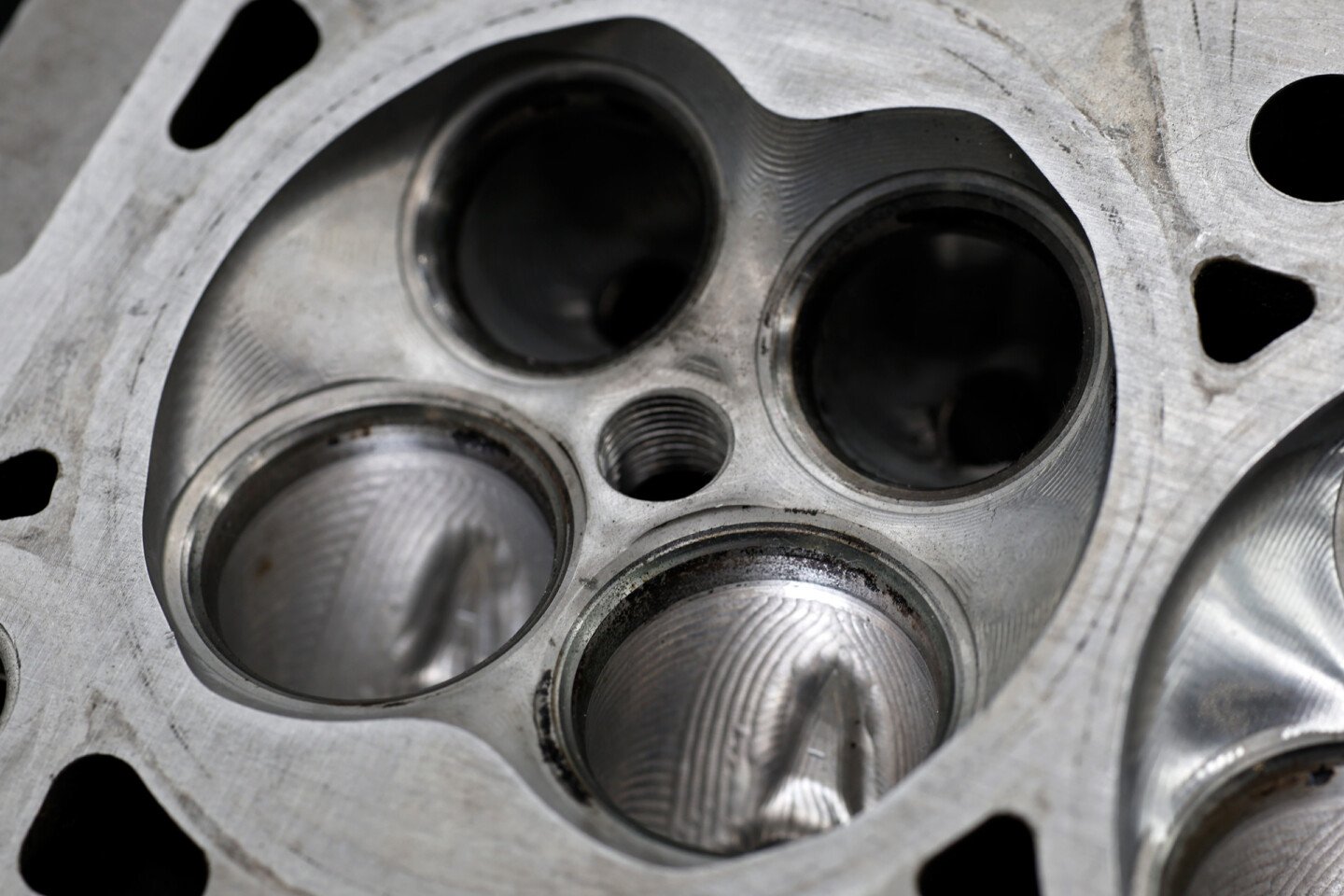
This is the Boss 302 factory combustion chamber. Besides being CNC profiled, notice there is no spot for a direct injector anywhere in this chamber.
Gen-2 Coyote Cylinder Head
Besides the glaringly obvious difference in finish between the two heads — one is CNC machined and the other has a rough, cast finish — Localio points out that there is no swirl enhancer in the intake ports. That right there pretty much busts the myth, but he dives deeper. “None of the throat is blended into anything, and in fact, the whole thing is smaller,” shares Localio.
Moving to the valve seats of the Gen-2 Coyote cylinder head, the façade crumbles even further. “The valve job is completely different on the intake side and on the exhaust side. I don’t see how they could be considered the same at all,” Localio says. Focusing on the exhaust side of the combustion chamber the provision (a small, circular flat in the chamber) for a direct injector is plainly visible but isn’t present in the Boss 302 combustion chamber.
The two exhaust ports side by side. On the left is the factory CNC-machined Boss 302 exhaust port, and on the right is the larger Gen-2 Coyote factory exhaust port. This where things get interesting. Despite being larger, the Gen-2 cast port only flows better at low lift numbers. After that the Boss 302 port flow sails off into the sunset, leaving the humbe Gen-2 in the dust.
The exhaust ports of the Gen-2 head are almost totally different save for the valve guide boss shape being pretty similar. The funnel shape of the Boss’ merge is missing, and the divider fin between the valves is much more pronounced. “I usually do this kind of fin in my heads to maintain some airspeed. Ford for sure did something different here in the Gen-2 exhaust ports,” says Localio. As mentioned previously, a rough caliper measurement shows that the dimensions of the Gen-2 port are larger than the Boss, sending another arrow into the fleshy part of the argument.
I think we’ve dispelled the myth that these two heads are the same,” says Localio. “They’re not the same. They’re nowhere near the same. You can see the port shape is different, the valve job is different, and the combustion chamber is different. Those things alone show us that the rumor is a myth. It’s a legend, like Paul Bunyon.”
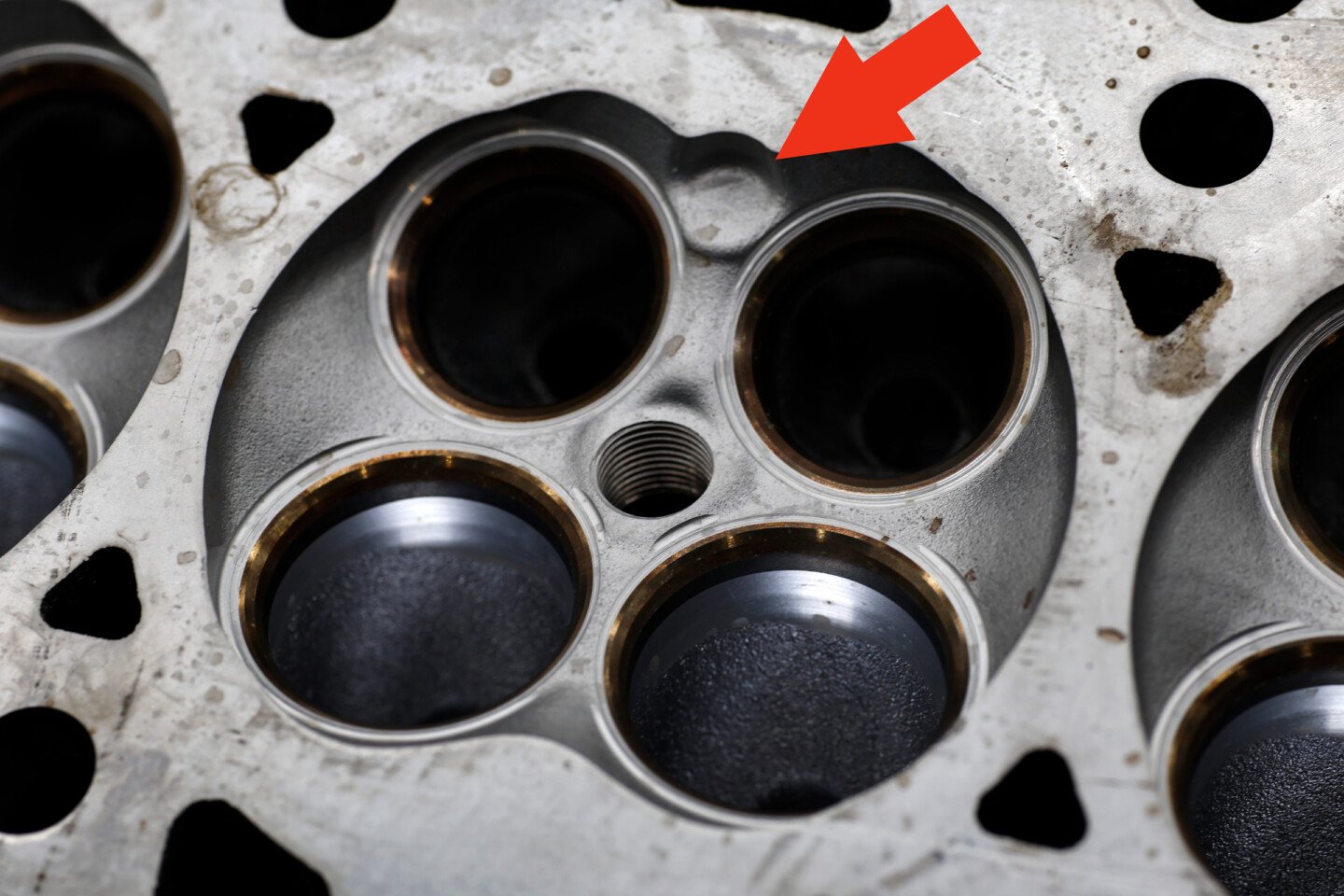
Here you can see the Gen-2 Coyote combustion chamber and the provision for a direct injector. Even though they weren’t DI engines, all the Gen-2 castings have the blank spot. That flat spot shouldn’t affect flow, but it very well could have some effect on combustion efficiency.
Flowing Some Air To Make A Point
While some people like to argue the usefulness of flowbench numbers, there is no disputing that in a scenario like this, the cold hard data is king. So, Localio put both heads on his SuperFlow flow bench and ran the tests with some incredibly surprising results.
The Boss 302 intake ports start off strong, but by .300 inch of lift, the Gen-2 has completely caught up to the Boss intake ports. At .450 inch of lift the Boss port starts to pull away, ending at a whole seven cubic feet per minute of flow over the Gen-2 head at .600 inch of lift. “I flowed it up to .600 inch, but you’re never going to put a .600 inch cam in the engine,” explains Localio. Not exactly the results we were all expecting.
On the exhaust, the difference in the ports was more pronounced during the visual inspection, along with the port dimensions being larger on the Gen-2 heads. The early part of the test shows that the size of the port gives the Gen-2 head an advantage at low lift. But at .250 inch of lift and beyond, the Boss 302’s exhaust port just runs away from the Gen-2’s, with the peak difference being 22 cfm in the Boss 302’s favor. “The bigger exhaust port didn’t really help the Gen-2 head,” says Localio. Make sure to watch the video above to see the flow graphs for yourself.
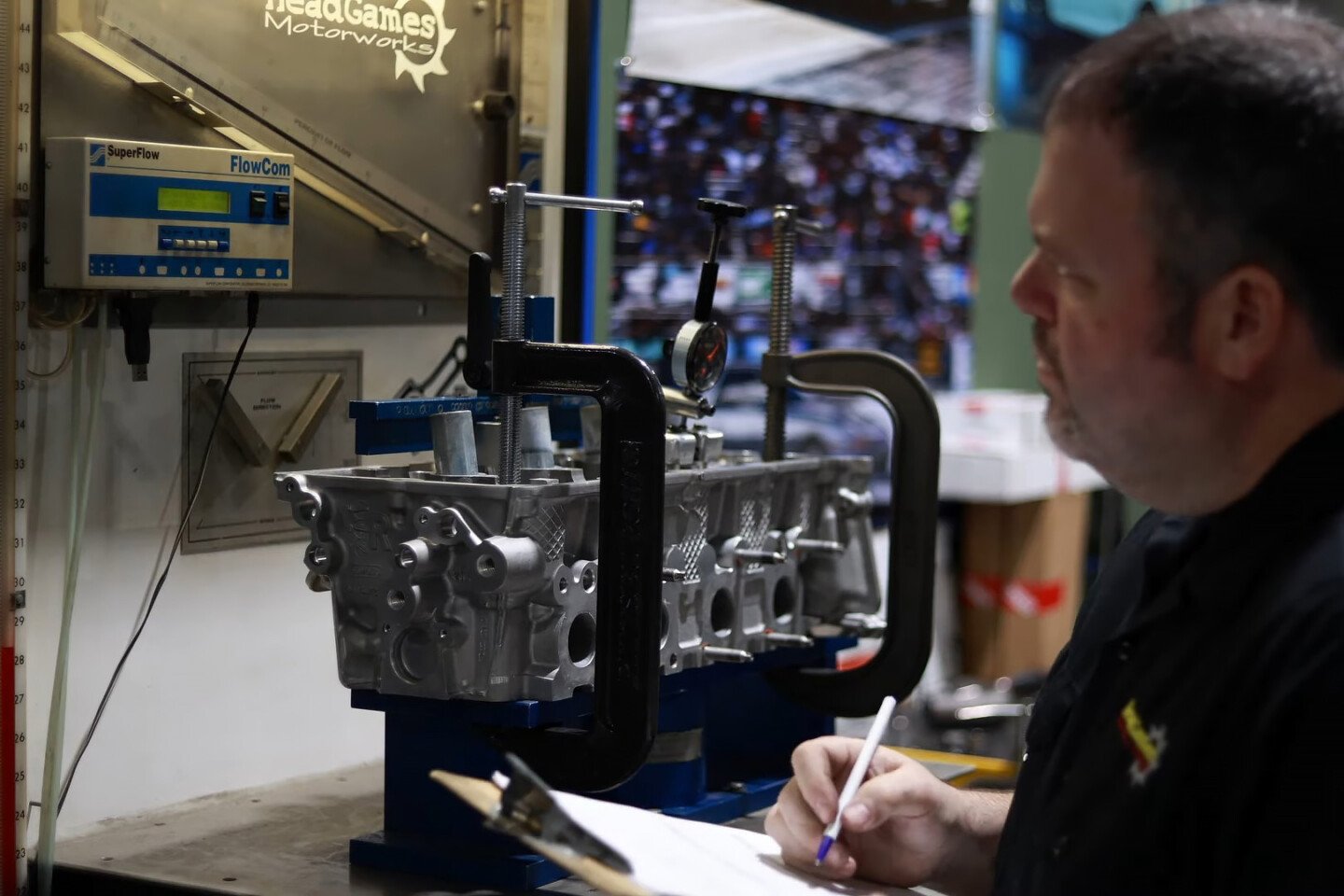
The slayer of sacred cows. David Localio doesn’t care about rumors or gossip. He cares about facts and figures. And he definitively put this internet story to bed. No, Gen-2 Coyote heads are not cast versions of the Boss 302 heads. End of story.
The conclusion of this test is clear. The two heads are different, and the Gen-2 is not “a cast version of the Boss head.” Localio concludes, “They don’t look the same. They don’t act the same. And, although they are kinda close, they are not the same. The Boss showed who’s the boss.” Then, just for giggles, Localio ran the HeadGames Boss 302 porting program on the Gen-2 head’s exhaust port, and found they it only touched a few areas of the port. On the intake port, only the entrance of the port was cleaned up. “I actually think the Gen-1 ports are closer to the Gen-2 than the Boss is to the Gen-2,” says Localio, throwing a little extra salt into the wounds of the slain myth.
At the end of the day, it’s awesome to see this kind of testing that really serves no purpose other than to address an internet myth that has been circulating for over a decade. Thankfully, we have someone like Localio who is not only willing to roll up his sleeves and put in the work, but he’s also not afraid to slay a sacred cow. Or, in this case, slay it, butcher it, and then cook it up medium rare and serve it to the audience with a side of A1 sauce.


